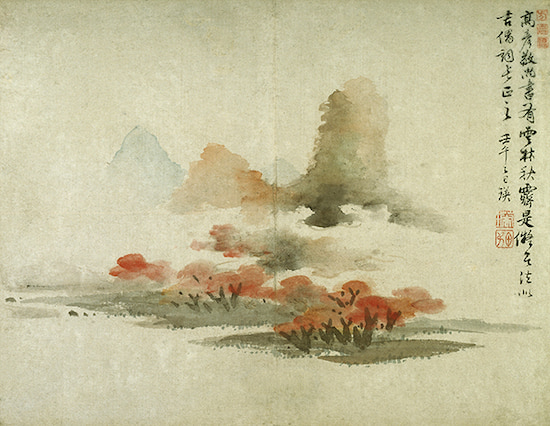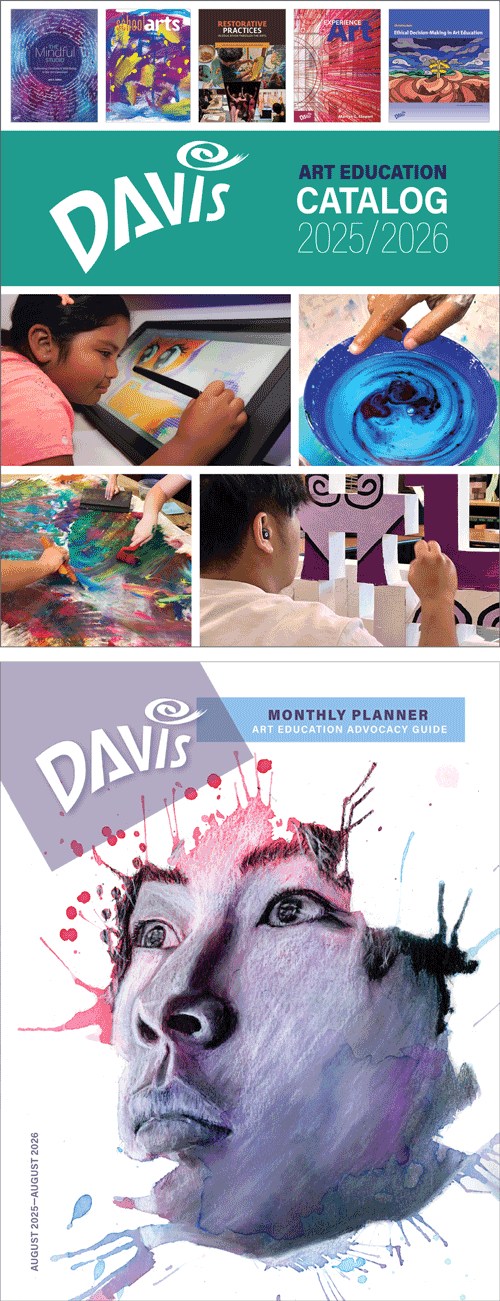A Fall Landscape: Lan Ying
This past weekend we laid to rest my dear father-in-law. He was always a big fan of the color changes to the trees in the fall in New England, which is peaking right about now. I am dedicating this week’s blog to Dad with Lan Ying’s beautiful autumnal landscape. Lan’s work shows the inherent abstraction in the work of the literati (scholar amateur) and individualist artists of the early Qing dynasty.
 |
| Lan Ying (1585–ca. 1664, China), Autumn Clearing in Misty Woods, 1642. Ink and colors on paper, 12 3/16" x 16" (31 x 40.7 cm). © 2025 Art Institute of Chicago. (AIC-342) |
The last decade of the Ming Dynasty (ca. 1634–1644) was the most productive period in Lan's painting output. At this point, he was so proficient in past styles that his copies, of such Yuan masters as Gao Yanjing (1248–1310) were often indistinguishable from the original. This album page was executed for Fang Hengxian (ca. 1620-1678) at Pingtangshan in Jiangsu province. It is dedicated by the artist to the earlier literati painter Gao.
Gao painted in a similar technique to the "Mi family style" of the Song Dynasty painter Mi Youren (1074–1151). Lan has aptly captured this unorthodox, expressionistic style in his suggestive landscape. Characteristics include conical mountains built up by layers of daubed ink, with dotting that suggests trees and vegetation, and negative bands of mist cutting through the landscape to denote depth.
Lan's use of vibrant colors such as red and green may be related to the expressionist amateur painter Chen Chun (1483–1544). The trees and land were rendered in quick washes. This technique of describing a landscape without first outlining the forms was referred to as "boneless" (mogu, literally “without bones”). Varying the density of the thin washes is a typical Song technique of establishing atmospheric perspective.
Painting has been an important artistic tradition in China since the 200s bce. The Chinese believed the scholarship is the highest achievement and believed that a scholar could enjoy perfection of insight into the physical and spiritual world. The reverence for the landscape combined with the respect for the scholar resulted in the evolution of the scholar/artist. This established a tradition in landscape painting that changed little throughout Chinese history.
Starting in the 1330s, there were floods and famine that lasted fifteen years in the Yellow River valley. Uprisings were frequent, and in 1368 the Mongols of the Yuan Dynasty (1280–1368) were overthrown by the Ming. The Ming ultimately moved the capital to Beijing to protect it from the Mongols who had fled beyond the Great Wall. The shock of Mongol rule caused the Ming dynasty to look back to the artistic accomplishments of the Song (960–1280), Han (206 bce -220 ce) and Tang (518–907) dynasties. The bitter resentment of the foreign occupation and foreigners in general caused Chinese painting to turn inward to past masters.
Ming painting continued the traditional two streams of conservative traditionalists and scholar/amateur individualists. There were three types that were popular: formal (following the strict traditional Chinese style); informal (with more angular expressive brush work); and flung ink (haboku), an imitation of spontaneous application of ink with large areas of blank support.
Lan was born in present-day Huangzhou. He apparently showed promise as an artist at a young age, anecdotally drawing a large landscape in charcoal at the age of 7 on the floor of a magistrate's hall. He became competent in the basics of landscape painting. In fact, he found so much pleasure in landscape, that he spent 1600 to 1610 wandering China to experience various types of the genre, thus appreciating what he wanted to accomplish with the brush.
Lan's recording of his natural observation was complemented by his incisive knowledge of past painting styles. This he gained from the literati (amateur scholar/painters) painters Sun K'o-hung (1532–1610), Tung Ch'i-ch'ang (1555–1636) and Ch'en Chi-ju (1558–1639), who shared their theories of spontaneity with Lan. He came to greatly admire the "eccentrics" of both the Song (960–1280) and Yuan (1280-1368) Dynasties. Between 1620 and 1630s, he painted in the full range of Chinese styles, from Song academic to Yuan literati.
Correlations to Davis Programs: Explorations in Art 1e, grade 6, 2.8; Explorations in Art 2E, grade 1, 4.4, 4.5; Explorations in Art 2E, grade 2, 1.5, 1.6; Explorations in Art 2E, grade 4, 3.2, 4.4, 4.5; Explorations in Art 2E, grade 5, 4.2, 6.2; Explorations in Art 2E, grade 6, 2.2, 2.3; A Global Pursuit 2E 4.5, 7.1, 7.2; A Personal Journey 2E, 5.4, 5.5; Exploring Visual Design 4E, Chapter 5; The Visual Experience 4E 8.13; space; Davis Collections – Chinese Art

Comments